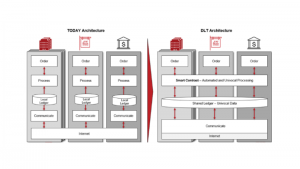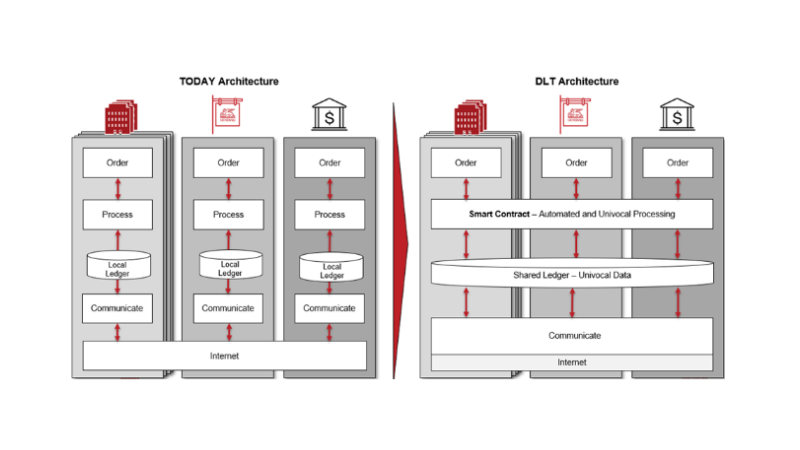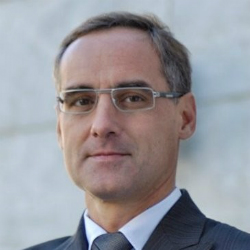
Sergio Di Caro, GEB’s Chief Executive Officer, said “This prototype represents a step forward for GEB and for the insurance industry. The use of blockchain technology allows for a truly connected ecosystem and a seamless partnership between clients, advisers, local insurers and Generali. Blockchain will change not only our Network but the employee benefits industry as we know it.”

Generali Employee Benefits
Generali expects the GEB/Accenture solution to streamline GEB’s employee benefit operating model for captive services. This offers global customers a comprehensive range of local admitted employee benefits solutions, such as:
- life insurance
- short and long-term disability insurance
- accident insurance
- healthcare insurance.
These local offerings are completed with reinsurance from Generali executed via captive or pooling services. The objective is to serve multinational corporations which need centrally to manage insurance schemes (and financials).
The roll-out of the solution follows a successful demonstration of a prototype last year. The involved two global clients:
- Syngenta, a leading agriculture company
- local insurers in Spain, Switzerland and Serbia.
The goal of the demonstration was to assess whether a solution could disrupt the market – by bringing genuine integration of systems, data and processes to all stakeholders in the employee benefits sector. The prototype demonstrated significant results for all stakeholders, including:
- lowering costs
- saving time
- improving data quality.
The solution and benefits
At its most basic level, blockchain is a database system which maintains and records data in a way that allows multiple stakeholders to share secure access to the same data and information. The database stores transactions and records on a ledger (blockchain) which is distributed among interested parties. The result is the delivery of levels of simultaneous transparency, security and trust not previously practical.
The solution, supported by the Generali Group and inspired by B3i, encompasses a collaborative initiative of 15 global insurers and reinsurers. These came together in late 2016 to explore and test the potential of blockchain in the industry.
Some of the benefits anticipated of blockchain in the EB space are:
- greater transparency: sharing the same ledger between all parties should facilitate and increase data quality via the transparency of any transaction and data transformation; with everything archived and authorised in a decentralised system, the platform ensure the processing of data in a reliable and transparent way
- leaving batch execution behind: – at present the business model is bound to fixed deadlines (as everything is done quarterly with a number of delays after the closing of that quarter); the project goal is to create a reliable platform, independent of frequency, which will allow GEB and partners to move away from fixed period batch execution
- elimination of human errors: blockchain removes the need for constant manual intervention, thereby eliminating multiple reworks of the same data set, reducing human error (and the need to fix the latter)
- increased efficiency and speed: today, different departments perform reconciliations and settlements using different technologies, potentially introducing time shift, accounting and incompatible systems issues; with blockchain, accounts payable share automatically between involved parties which can cascade to treasury functions (and banking) with minimal manual intervention.

With the key issue in the EB space being every insurance company works in a different way, GEB’s intention is to encourage network partners and clients to reach a situation where there is:
- data standardisation
- integration with process automatation.
Daniele Presutti, who leads Accenture’s Insurance practice in Europe, said: “Blockchain technology creates a more-connected ecosystem among stakeholders, allowing a reliable means of information exchange and streamlining previously complex, manual processes within insurance. We are pleased to work with Generali Employee Benefits to help revolutionise the employee benefits process for its customers.”

Enterprise Times: what does this mean
Insurance, and even more so reinsurance, are industries encumbered by multiple participants, predominantly manual processes and excessive paperwork. Despite vast investments in computing, most of these IT investments are incompatible, both within one business enterprise but even more so between business enterprises.
In many ways the Accenture / Generali solution is akin to using blockchain to address supply chain issues. With many participants, any system which simplifies while clarifying will be attractive. But only so long as enough of the participants participate (q.v. IBM/Maersk).


























